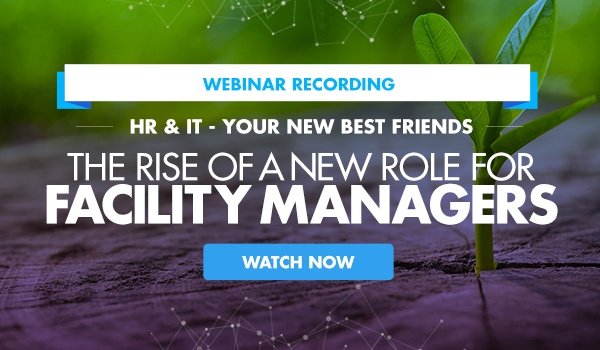Technology Enables HR to Fulfill Its Role in Creating an Employee-Focused Workplace


Attracting and retaining talent are two major factors for creating a successful and sustainable organization. It is not surprising, then, that both are always top of mind for HR professionals.
As competition for talent has increased over the last decade, many organizations have focused on perks and compensation, but fewer have realized that the employee experience in the physical workplace offers a game-changing opportunity to win the talent war. HR is in a unique position to increase the focus on the importance of employee experience and, more importantly, change the workplace to become more employee experience-focused.
Creating a Connected Workplace
Technology has become king in our new, digital workplace.
Employees expect their workplace tech to work as flawlessly as their smartphones. Adopting an integrated workplace management system (IWMS) allows an employer to meet that expectation by removing roadblocks between departments and enabling the continuous, secure sharing of employee and workplace data.
Launching an IWMS also increases DIY functionality for employees and lets managers gain clearer insights into how employees actually use their workspaces. Such insights, based on real-time data, enable talent executives to take intelligent action in line with employees’ needs while also planning for the future.
Large departments and agencies that need to optimize their workspaces and better manage the employee experience will see the greatest benefits from deploying an IWMS. HR leaders who manage more than 500 employees or who serve teams at multiple locations need a single platform to gain true visibility into their workforce.
The goal is to create a digitally connected workplace that maximizes returns on the organization’s two biggest expenses of its workforce and its workspaces. Bottom line boosts may also come from an improved employee experience that yields faster recruitment, better retention and greater satisfaction.
Properly used, an IWMS allows HR leaders and other organizational decision makers to leverage the current tech stack and the data it produces to select and make available the tools managers and employees need to thrive by connecting departments, streamlining services, supporting a mobile workforce and making everyone smarter. Here is how.
Connecting Departments
Most organizations use multiple data systems that do not talk to each other. As a result, departments often operate within silos. Choosing an IWMS with an open API that allows, say, popular HR platforms like Workday and Microsoft Office to integrate means there is no need to replace formerly incompatible systems in order to create lines of communication and transparency between departments.
Imagine easily sharing the directory of employees with facilities management and IT. Since an employee’s experience begins on his or her first day, not having a working email, an assigned desk or access to a conference room can start things off on the wrong foot. By connecting departments and data, everyone will be e prepared to make the first day, and every day thereafter, an employee’s most productive day ever.
Streamlining Services
Nothing demoralizes A-list employees faster than an unresponsive workplace. Today’s talent leaders must ensure a work environment that fosters great work and effortless collaboration. If a chair broke in accounting or the leader of the weekly staff meeting needed audiovisual equipment for a presentation in Conference Room A, employees would traditionally submit service requests and wait, hoping for timely responses.
With an IWMS, demands for service can be met instantly. The integrated system would permit workers to use a mobile app or a connected room kiosk to their log service requests and receive
status updates or confirmations of delivery. When employees get what they need when they need it, they feel empowered and in control of their workspaces. Watch job satisfaction skyrocket.
Supporting a Mobile Workforce
Working remotely is becoming more common. This makes creating a fluid, connected experience for workers regardless of their physical location essential.
Implementing an I WMS makes it possible to provide employees what they need to be as productive as possible. Connecting all employees through a single system, allows floating team members to reserve hot desks or reserve conference rooms with a few mouse clicks or via a mobile app.
Making Everyone Smarter
HR professionals benefit by gaining clear insights from real-time, accurate data. Imagine syncing important data between HR, facilities management and IT to truly understand how team members act in and interact with their workspaces-their likes and dislikes, what makes them hyper-productive and engaged.
Using an WMS to build and access a shared data repository that is open to executives, department heads and employees alike facilitates planning for future innovations. More immediately, workspaces can be continuously optimized based on employees’ actual behaviors and preferences, which will increase efficiency while making employees happier.
Much of the future success of organizations is dependent upon HR helping to create a truly connected workplace. Now is the time to begin to set yours apart from the rest.
This article was first published in the May 2019 edition of HR News Magazine, and was republished on the iOFFICE blog with permission.
